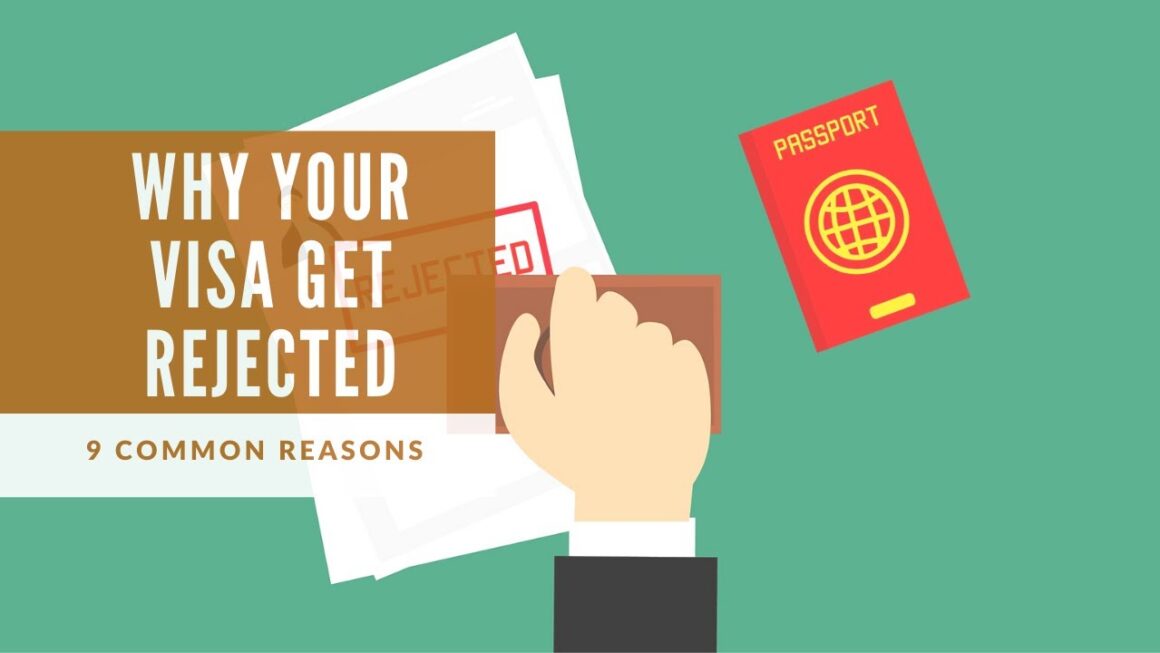Why Most Visa Applications Are Rejected — And How to Avoid the Red Flags

If you’ve ever filed a visa application and felt anxious about the outcome, you’re not alone. Each year countless applications are denied worldwide. Understanding why most visa applications are rejected is the first step toward avoiding the traps that trip up thousands of hopeful travelers and students. In this article, we’ll explore the most common reasons for visa refusals, show how these red flags appear in real-world cases, provide a comparison of mistakes vs. best practices, and end with a clear roadmap to strengthen your application.
The Reality: Visa Denial Rates and What They Show
Visa rejection is not just rare happen-stance—it’s a systemic risk. For example, the U.S. Department of State states that a visa applicant must establish eligibility or the application must be refused. (Travel.state.gov)
According to one review of travel visa denials, typical reasons include errors in the application form, insufficient documentation, weak ties to the home country, and inconsistencies between what you said and what you did. (Boundless)
This means the stakes are real—but the good news is many red flags are avoidable.
Common Red Flags — And How to Shift Them Into Strengths
1. Incomplete or Incorrect Documentation
One of the fastest ways to get a “no” is when required documents are missing, filled out incorrectly, or inconsistently presented. (getworkflex.com)
How to avoid it:
- Create a checklist of required documents (passport, photos, financial statements, itinerary, etc.).
- Double-check names, dates, visa category, and form fields for typos or mismatches.
- Make sure supporting evidence is clear and legible.
2. Weak Evidence of Financial Support
Visa officers often assess whether you can cover the stay and whether the funds are genuine. If your bank statements suddenly show large deposits or your income isn’t clearly linked to your lifestyle, you may trigger a red flag. (Passage Immigration Law)
Fix this by:
- Showing a consistent financial history.
- Demonstrating how the funds were acquired.
- Including letters of sponsorship, employment or scholarship when relevant.
3. Lack of Strong Ties to Your Home Country
For many non-immigrant visas, applicants must prove they’ll return home. If you show no job, family, property, or other ties, your intent may be questioned. (ma.usembassy.gov)
Build your case by:
- Documenting employment, studies, family links or property in your home country.
- Explaining what you will do when you return (career, family, community).
- Avoiding statements that imply you intend to immigrate when applying for a short-term visa.
4. Misinterpretation of Travel Purpose or Duration
Whether for study, work or travel, a lack of clarity in your purpose, or requests that don’t align with your profile or pay-scale raise alarms. (Udeti)
You can improve this by:
- Crafting a clear itinerary: where you’ll go, why, for how long, what you will do.
- Matching your travel purpose to your visa type (study visa → study; visitor visa → tourism/family).
- Avoiding vague or contradictory statements in forms or interviews.
5. Previous Immigration Violations or Suspicious Travel History
If you have overstayed a visa, applied multiple times unsuccessfully, or have inconsistent travel records, you may be flagged. (Passage Immigration Law)
What to do:
- Be transparent about past denials or violations.
- Provide explanations or evidence of changed circumstances.
- Strengthen other areas of your profile so you’re not reliant on a clean record alone.
Mistakes vs. Best Practices: A Quick Comparison
Here’s a comparison table showing poor practices that often lead to rejection and the better alternative you should aim for.
| Mistake (Red Flag) | Best Practice (Avoidance Strategy) |
|---|---|
| Missing or inconsistent documents | Submit a full checklist, double-verify all entries |
| Large unexplained deposits in bank statements | Show consistent financial history with explanations |
| No clear reason for travel or mismatch | Provide a strong, aligned purpose & clearly documented itinerary |
| Poor ties to home country | Show employment, property, family or future commitments at home |
| Previous overstays or violations ignored | Disclose past history, explain changes, strengthen your case |
| Applying at wrong visa category/embassy | Research correct visa type, apply at correct consul or embassy |
How to Strengthen Your Application: A Step-by-Step Roadmap
Here’s a practical plan to avoid red flags and give your visa application the best chance.
- Start early – Apply well ahead of travel date; many embassies recommend months in advance to account for processing.
- Create a comprehensive document folder – Use digital and physical copies; label each file, ensure clarity.
- Check your form carefully – Review every field, ensure consistency with your passport and other documents.
- Show genuine finances – Use bank statements showing a stable financial history, add employment or scholarship details.
- Prepare an itinerary and travel purpose explanation – What you’ll do, where, and how it relates to your life or work.
- Highlight your ties to home – Show that you have reasons to return: job, family, education, property, etc.
- Practice your interview – Be ready to answer questions honestly, clearly, and with confidence.
- Disclose past visa issues or travel history – If applicable, explain the circumstances and how things have changed.
- Review embassy/consulate-specific instructions – Some countries have extra requirements (e.g., social-media handles, extra bio info).
- Have a backup plan – If you’re rejected, understand whether you can re-apply, whether you’ve built new evidence, and what changed in your situation.
Why This Matters for Students, Professionals & Travelers
Whether you’re a student applying for a study visa, a professional seeking work abroad, or a traveler planning a long stay, visa rejection can disrupt your goals, cost money, delay plans—or worse, damage your future applications. By understanding why most visa applications are rejected, you shift from reacting to being proactive. You gain control over your travel destiny.
Final Thoughts
Think of the visa application as more than a form—it’s your story, your case, your credibility in front of a decision-maker. If you treat it as an afterthought, you risk falling into one of the common traps. But if you approach it deliberately, check all your documents, align your purpose, prove your ties, and avoid the red flags listed above, you’ll dramatically increase your chances of success.
Your next step? Choose one of the red flags above you might be vulnerable to, address it this week, and build your application from strength. Because preparation is your best ally—and clarity is your strongest asset.






